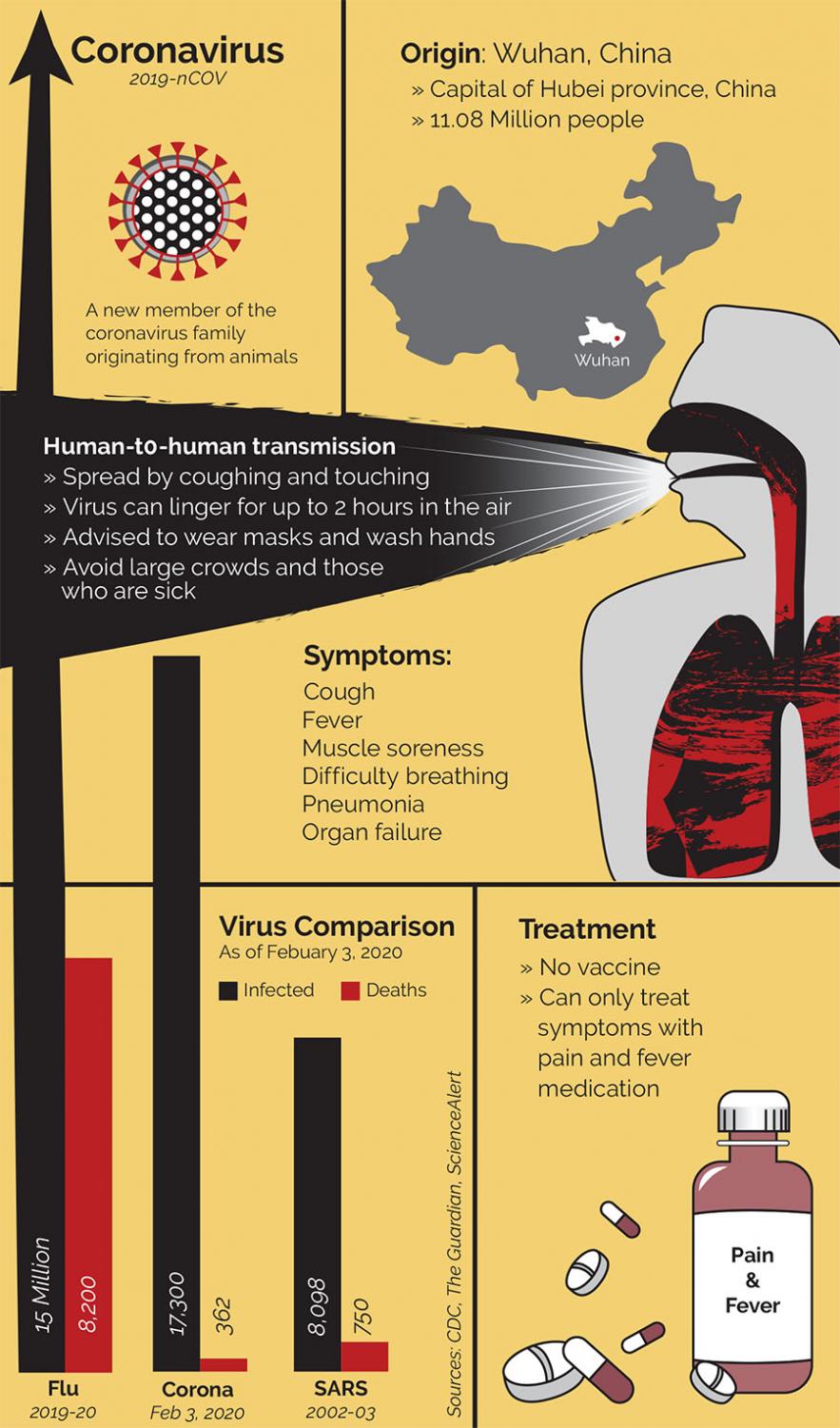Flu still the bigger threat
New Coronavirus causes fear, but annual flu virus impacts many more people
February 5, 2020

A new virus has made its global debut and as a result, people wonder if they should be concerned. According to Dr. Ryan Westergaard, chief medical officer at the Wisconsin Department of Health Services, the normal flu is more of a concern here in Wisconsin, where most of the state has high influenza activity.
In the 2018 to 2019 flu season alone there were 17,210 cases of the flu in Wisconsin according to the Wisconsin Department of Health Services. This number puts Wisconsin in the high activity threshold for influenza-like illnesses. There have already been 26 total deaths this season due to the flu in the state, whereas there have been zero deaths from Coronavirus, let alone any confirmed cases yet.
The novel coronavirus, now being called 2019-nCoV, had not been detected in humans prior to the outbreak in Wuhan, China in December 2019. While it is concerning, it’s mostly from a lack of information about this specific strain. As more data becomes available, containment and treatment will likely become easier. Medical Director of Infection Control at UW Health, Dr. Nasia Safdar, noted that a vaccine is currently being worked on.
The new virus has similar symptoms to the flu we see every year, fever, cough, shortness of breath etc. so a travel history is important if you are going to a clinic. If you have been to the Wuhan, China region or have been around someone who was in that area and begin showing symptoms, tell your doctor as soon as possible. Communication is important for determining who needs to be tested and/or monitored for the new virus.
Avoidance of any virus is recommended and luckily, both flu and 2019-nCoV have similar prevention guidelines. Wash your hands with soap and water and practice good respiratory hygiene by covering mouth and nose when sneezing or coughing. Avoid others who have a fever or cough and use alcohol-based wipes and cleansers to sanitize surfaces.
As always, more information is available on both the Wisconsin Department of Health Services and Center for Disease Control websites.






























